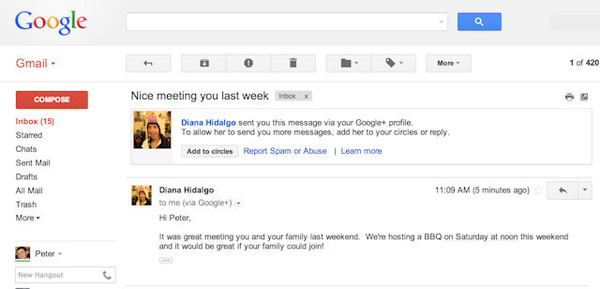
It has been ten years since Google opened up its shiny new e-mail service to the public, but only if you had an invite from an existing user.
Before then, GMail was an internal e-mail system for Google employees. Even after it opened to the public for the first time on April 1, 2004, it remained invite-only and at one point, it was reported that invites to the service sold for as high as $150 on EBay, and eventually Google had to move to prevent the selling of accounts. It also remained in beta for a considerable amount of time.
Within a year of operation, GMail users enjoyed 2GB of storage, which was considerably more than Google's standing competitors at the time. It also added more features such as formatted editing. In November 2006, it got its own first mobile applications for devices that could run Java apps.
Over the years, Google has integrated GMail and its other services, with a major change coming with Google Docs in 2007 which made it possible for users getting Office documents and spreadsheet as e-mail attachments to open them in the browser. Google also added IMAP support later the same year.
It wasn't until July 2009 - over five years since the public first got a chance to get a GMail account - that Google announced GMail (and its wider Google Apps) were out of beta.
Over the years, Google has made many changes to how GMail operates, such as its categorization of e-mails in today's version of GMail as "Primary", "Social" or "Promotions". Even the grouping of e-mails as essentially conversation that we take for granted now was made standard by GMail. Looking back at the pre-GMail days, you can't help but remember the floods of spam on some other services that seemed not to affect Google's service nearly as much.
From an invite-only service, to now having hundreds of millions of users, Google really hit a home run with it's e-mail service, especially when you consider just how late to the "free e-mail account" game the search giant was.
Happy Birthday GMail!
Within a year of operation, GMail users enjoyed 2GB of storage, which was considerably more than Google's standing competitors at the time. It also added more features such as formatted editing. In November 2006, it got its own first mobile applications for devices that could run Java apps.
Over the years, Google has integrated GMail and its other services, with a major change coming with Google Docs in 2007 which made it possible for users getting Office documents and spreadsheet as e-mail attachments to open them in the browser. Google also added IMAP support later the same year.
It wasn't until July 2009 - over five years since the public first got a chance to get a GMail account - that Google announced GMail (and its wider Google Apps) were out of beta.
Over the years, Google has made many changes to how GMail operates, such as its categorization of e-mails in today's version of GMail as "Primary", "Social" or "Promotions". Even the grouping of e-mails as essentially conversation that we take for granted now was made standard by GMail. Looking back at the pre-GMail days, you can't help but remember the floods of spam on some other services that seemed not to affect Google's service nearly as much.
From an invite-only service, to now having hundreds of millions of users, Google really hit a home run with it's e-mail service, especially when you consider just how late to the "free e-mail account" game the search giant was.
Happy Birthday GMail!













